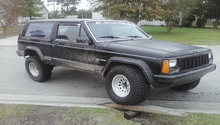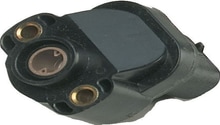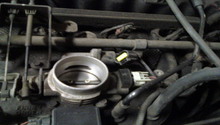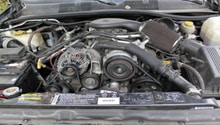Jeep Cherokee 1984-2001: Why is My Car Stalling?
If your car slows down on its own and cuts off abruptly, continue reading for possible causes.
This article applies to the Jeep Cherokee XJ (1984-2001).
The venerable 4.0L Jeep straight-6 is comprised of a series of complex systems that all allow the motor to run smoothly whether stopped at a stop light, on the highway, or driving around town. Of all the components involved, if one of them experiences a problem or failure, it can cause your vehicle's operation to suffer or even cease. If you have ever been stranded on the side of the road, you can imagine that there are several causes to this occurrence. The motor depends on engine oil for lubrication, water to keep it cool, good spark, significant fuel and proper airflow. If any of the components related to these are affected or failing, your vehicle may show signs of erratic operation.

DIY Cost Breakdown:
- $5 for each spark plug
- $29 for idle air control (IAC) valve
- $35 for crank position sensor (CPS)
- $45 for throttle position sensor (TPS)
Materials Needed
- Screwdriver
- Carb cleaner
- Ratchet set with sockets
- 5/8 spark plug socket
- Shop towels
- Multimeter
- Dental picks
- Q-tips
- Brake cleaner
Step 1 – Check for fuel and spark
If your vehicle has shown signs of "cutting off" on its own, it may be starving of fuel or not getting proper spark.
- Remove Cylinder 1's plug wire.
- With the plug placed within the wire, hold it near a good ground.
- Have a friend crank the car and watch for a spark.
- Connect the fuel pressure gauge to the Schrader valve.
- Have a friend crank the car and watch for fuel as well as pressure.
- As an additional measure, you can also have the battery load tested at your auto parts store.

Figure 1. Check the condition of your plugs. 
Figure 2. Test your fuel pressure.
Pro Tip
When removing the spark plug to check for spark, take note whether the plug is fouled with gas or wet.
Featured Video: How to Replace Spark Plugs
If your Jeep is making good fuel pressure and the plugs look healthy, it's time to move on.
Step 2 – Clean throttle body
It might be possible that the airflow to the motor is blocked or "choking."
- Disconnect the TPS (throttle position sensor).
- Disconnect CPS (crank position sensor).
- Remove the throttle body.
- Separate and inspect the IAC (idle air control) valve.
- Clean the throttle body thoroughly with carb cleaner.
- Reinstall the throttle body.
- Reconnect the sensors.

Figure 3. Clean the throttle body. 
Figure 4. Inspect IAC valve. 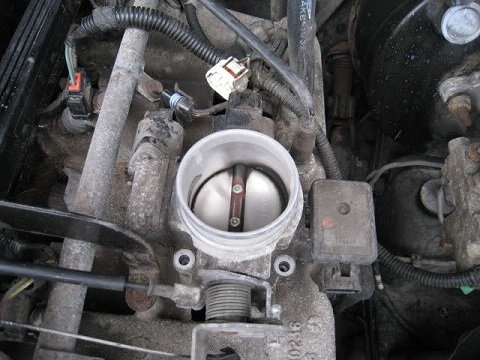
Figure 5. Throttle body cleaned.
Pro Tip
When you inspect the IAC valve, see if it is torn, damaged or corroded. Replace accordingly. This is also a great time to check any vacuum lines for cracks or rot and replace them.
If the issue persists, it's time to move on.
Step 3 – Replace, refresh and/or clean sensors
Over time, the electrical connectors exposed in the engine bay can be subject to debris and grime along with the heat of the motor to pack it in. The Jeep's sensors and electrical system contain several weak points.
- Disconnect the TPS sensor and clean it using Q-tips, a dental pick, and some brake cleaner.
- Disconnect the CPS sensor and clean it using Q-tips, a dental pick, and some brake cleaner.
- Inspect the related grounds for corrosion and thoroughly clean any tar or crud.
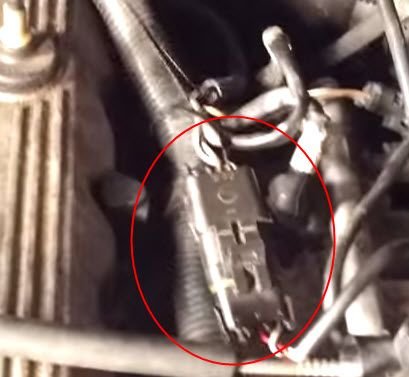
Pro Tip
There are several instances where unplugging and re-plugging the CPS has resolved a stalling issue. This is also a sign that this sensor is the cause of the issue and should be replaced.
Featured Video: How to Reset CPS Sensor
Related Discussions
- Idle Air Control (IAC) Valve Discussion - CherokeeForum.com
- Sensor and Ground Cleaning and Refreshing - CherokeeForum.com
- Discussion Regarding Sensors and Occasional Stalling - CherokeeForum.com

